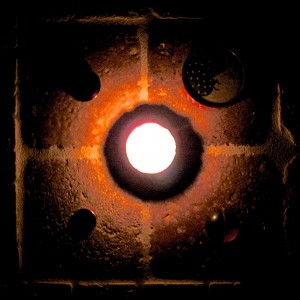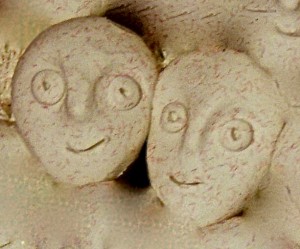Today we post Chuck’s blog. Jan’s blog will appear on Friday this week.

As I write, millions of Hindus celebrate the festival of Kumbh Mela at the mythical river Ganges. The Tibetans have just celebrated their New Year, the year of the water snake, on the day the Pope resigned. Fat Tuesday, the height of Carnival, lands on the day of President Obama’s State of the Union address. Today, Ash Wednesday, ushers in Lent, forty days of sacrifice—carne denied—before nature ushers in the Rite of Spring.
The juxtaposition of these human traditions built upon the deepest cycle of nature—the end of winter—reveals the exceptional tumult and uncertainty of our time. Will spring ever come, will life survive this most tenuous time of year? A Pope resigning, an unheard of event, is a strong testament to our time of fragility and rapid change, and the need for new governance to lead us forward. The King is dead, long life the King!
On Monday of this week, I turned to the I Ching for reflection on the extraordinary synchronicities of these archetypal events. I offer its guidance as I received it: I threw hexagram #64, Before Completion, with moving lines in the first, second, and fifth places. The resulting future of this hexagram is hexagram #25, Innocence.
Before Completion is the time of very early spring, the time we are in now. The image is that of the fox crossing the semi-frozen surface of a lake. How wisely will that fox cross so as to not accidentally fall through a crack in the ice?
Hexagram #64 is the final hexagram in the I Ching, the Book of Changes. It ushers in the beginning of a new cycle, the time of year we are in now. It is the time of new governance that we are now in as well. It’s the time of planetary transition, at the deepest level, that we are also now in. The question is, as the earth enters its new cycle, how wise will we humans be as we cross the thin ice? How well will we fare?
The two elements that comprise hexagram #64 are fire above and water below. These elements are opposites and they are moving away from each other. Something must happen to bring these elements into a harmonious relationship. Our human country and human world suffer this same opposition now, a great division. Will we find a way to reconciliation and the fostering of new life?
The first moving line states that the fox is too hasty; it gets wet. The I Ching suggests that we are quite vulnerable to get it wrong; to move too hastily is to form a less than perfect union. Restraint is suggested to avoid failure and humiliation.
In the second line, the fox exercises its brakes and does not cross the thin ice. Patience, to accrue the inner strength that together with firm intent will provide the right vehicle to cross the lake, is the guidance here.
The six in the fifth place is the ruler of the hexagram. Victory is achieved. Steadfastness leads to a superior personality that crosses the ice successfully. And with this, the potent, medicinal, nourishing sprouts of spring break through the surface to support new life.
The hexagram of Innocence guides the practice outlined in these moving lines. The essence of innocence is the alignment of ego with spirit self. When ego acts in the service of spirit it is restored to its innocence. This is not a return to the unconscious innocence of the Garden. This is evolved innocence, consciousness that acquiesces to the truth of the spirit.
Last night we witnessed opposition—fire and water, Democrat and Republican—as presented in hexagram #64 in real time, as the archetypal drama of excess, sacrifice, death and the hope for new life played out before us. Mardi Gras closed on the heels of death, Ash Wednesday, as Guy Fawkes—the giant straw man, in the guise of Christopher Dorner—was burned in the arms of Big Bear, CA. The TV networks struggled to decide which reality to display as President Obama simultaneously, in his State of the Union address, spoke of a realignment of governance to face the truths of a planet in peril. He spoke of global warming, energy that doesn’t pollute, and greed tempered to provide a fair wage. These are the sacrifices spoken about in the I Ching under innocence, where the ego—the governing body of the self and of humankind—acquiesces to the truth of the spirit. And Obama stood there before the opposites of fire and water to bring these two opposing forces into fruitful alignment and the hope of a new spring and sustainable life.
Will we take the advice of the I Ching, so in alignment with now? Do we have the humility of a Pope who retires his ego, recognizing that he can no longer hear the spirit and properly serve the people? Can we of the human race surrender our collective ego as the fathering principle of this planet, and acquiesce to the truth of spirit as our Rite of Spring? With a hopeful outlook, the Book of Changes comes to a close and simultaneously enters a new cycle of life. Let’s see what happens.
In anticipation,
Chuck









